Are the Equality Laws fit for purpose?
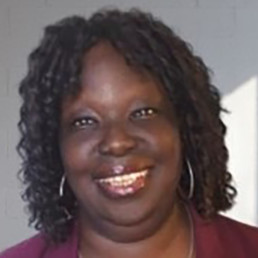
Written by Shola Adewale Sandy
Shola is the proud author of the debut novel called ‘ICE, the trilogy’ which stands for I Can Explain, it’s her memoirs that follows her journey in the educational system as a black women professional and the importance of stopping systematic discrimination, unfortunately she has experienced and witnessed over the years in inner London schools.
When I first walked into a secondary school in inner London, as a black member of staff, I didn’t think anything of it, after all there were others there and they seemed to be doing fine on the surface… I rolled up my sleeves, I was committed, prepared and ready. To the best of my ability, I would do good by those students. I felt this was my calling in life…
I looked at the decorated reception and walked around the massive assembly hall. It was early in the morning, I was enjoying the silence, but excited at what was to come… this is where dreams and aspirations are developed for those young minds and maybe for me too…
Fast forward and they soon sprout up in Year 11, leaving to go out into the big wide world. Having gone through the school system knowing what equality, fairness and hard work really looks like. This is what we teach them, isn’t it?
So what happens, if you find yourself in a situation where you were not being paid the same as your white counterpart or given the same opportunities, despite being a dedicated and a hard working member of staff?
That was me! Can you imagine? I initially thought nothing more of it, after all we have laws to protect people like me in a work environment. I was not even in a union because I was so confident that fairness and common sense would prevail!
“This must be a minor mistake; it will get cleared up in no time!” I said to myself over and over again, as the years went by.
Before you all go for me, I am not generalising, but if you happen to be in a situation and the odds were against you like I was, being in front of such a cantankerous headteacher, what would be your choices?
Remember, you are reminded daily by the micro aggressions towards you, grating away at your skin, getting right to the very core of you. You are nothing more than a mere irritable speck on their shoe, that they can’t seem to get rid of. So where do you go from there, if you please…
Ignore and march on, hoping and praying things would improve – check
Informal discussion with line managers – check
Discussions with other school leaders – check
Union rep – check
Informal discussions and meetings with headteacher –check
Human Resources – check
Union rep again – check
School Governors – check
Formal meetings with headteacher – check
Headteacher’s Peers and other leaders in the community – check
Local Authority – check
Tribunal system – I can’t disclose everything here folks, you will have to read my memoir….
And all you can think of to do in-between!
What do I have to do to be treated fairly, was the question I kept asking myself? As I made my way through the above list.
For most people, their response probably would be:
” I can’t deal with this; I would have been straight out the door!”
Yeah right, I wish it was as easy as that! I was invested in those students for better or for worse! (It’s an unwritten contract when you work in those types of inner city schools)
“No way! I would have to be dragged away in chains screaming and protesting, I would not leave those students by choice!”
Anyway, it was the principle of the whole damn thing! After all, why did our forefathers sacrifice and suffer for, all those years ago, surely so we wouldn’t have too now!
Yes, leaving and getting a job in another school would have been an option, but that’s another conversation to be had. In reality, it is much harder to successfully achieve this, as we need that all important, crucial reference from your former headteacher! Could they be trusted to give you a glowing reference despite your differences, hmm, a lot of people might hesitate at leaving that in the hands of such a person! I know I certainly would!
When I look back, I realise that it is also the system to blame. Giving permission for gross misconduct to take place within Education, allowed that specific headteacher to have the confidence to treat me that way. Knowing profoundly, that they had the power and would ultimately get away with their treatment of me, especially with the support of their loyal allies.
Thankfully, not all headteachers are like this, but you only have to come across one in your lifetime as a black person and trust me you will never forget the experience in a hurry!
How do we teach children about the World without scaring them?

Written by Rob Ford
Rob is an educator for nearly 30 years, a history and politics teacher, a school leader in various schools in the UK and was principal of Wyedean School in the UK, before being appointed as Director of Heritage International School group.
“It is easier to build strong children than to repair broken men”. Frederick Douglass
One of the toughest challenges I have ever faced in my career is right now. How, as educators, do we present the World to our students without scaring them and conveying the impression that a grim dystopia awaits? It is not enough to simply “present the World” and its issues. The role of education is to allow the development of critical understanding and to impart our shared societal values.
Allowing students to voice their fears, to understand the World as it is in the 2020s with complex existential issues such as climate change, pandemics, nihilistic wars, deep inequalities and injustices, all around the globe, these are issues that adults find hard enough to comprehend in this tumultuous decade. But this is a challenge we cannot be scared of or vacate the arena as educators to the populists and the extremists in our midst. Educators cannot be scared of education.
Our role in education is to show it doesn’t have to be this way and the World could and should be a better place. Education isn’t a passive process or outcome. We are not on the sidelines learning abstractly. We need to ensure that our students, as the next generation, have some degree of hope that there are solutions and resolutions to create a more sustainable, equally, just and peaceful way in a realistic, non Panglossian way. And don’t forget to also teach them the beautiful human stories that exist and happen globally daily.
“At present the ways we organize education across the world do not do enough to ensure just and peaceful societies, a healthy planet, and shared progress that benefits all. In fact, some of our difficulties stem from how we educate. A new social contract for education needs to allow us to think differently about learning and the relationships between students, teachers, knowledge, and the world”. UNESCO Reimagining our futures together: a new social contract for education (1)
The perceived politicisation of education over the last decade in countries such as the US and UK, in an arena created with artificial and lazy constructs in terms and words such as “cancel culture” or “woke” has actually scared many educators from even attempting to explain global events, often sticking to a “teach them the facts only” without any values attached to this approach or critical thinking and understanding to unpack complex issues or historical and political events.
In the USA, this has been associated with America’s complex and difficult history around slavery, segregation, diversity and equality. The political issue of Black Lives Matter and high profile deaths of black people, coupled with the populism and nationalism of the Trumpian era, not only scares teachers in how they proceed but it scares students about the future full stop. There are extreme cases of states banning books and “critical race theory” has become a very thorny legal issue for many school boards and individual parents. US teachers and school leaders will end up leaving the system as these ‘culture wars’ continue (2). It seems odd that as Black History Month celebrations are an established feature of my schools in Moldova, more and more US schools are worried to even have such an important part of the school calendar.
In post Brexit Britain, the UK Prime Minister’s January 2023 announcement that students in England would study math up to 18, seemed to endorse the move away from schools “educating” students about the World and a policy approach in line with basic skills being the purpose of schools. At some point, these false binary dichotomies prevalent in education for too long be it “skills v knowledge” or “trad v prog” will disappear but it seems we have some way to go yet in the UK at least.
I have experienced these challenges all my career as a history and politics teacher, and as a school leader responsible for the moral, social and cultural values on the development of all the students in my care into well rounded, educated, intelligent, civic minded citizens and global citizens of the future. Teaching history in the city of Bristol, with its slavery legacy, was never an issue and we had brilliant engagement from community groups, local museums, the universities, the city council, in how we presented and taught local history. Standing by the empty plinth of Edward Colston this summer with my own children, talking about their city’s history, is part of that approach of educating not scaring.
As a former Head of 6th Form, the UK government would be wiser ensuring that all 16-19 year olds not only had career and work skills but also the ability to develop critical thinking, debating, dialogue in safe spaces and media literacy. The excuse of the ‘crowded curriculum’ often only on 3 A Levels doesn’t wash here when compared to the study programmes of 16-19 year olds around the globe. To hear good voices, informed ideas and views, through lectures and talks, different opinions, but all within the framework of accepted democratic society. This is the open mind set we want all students to develop. As the Head of Wyedean School, the highlight of my week was the 6th form critical thinking class in my room on a Thursday morning.
A much derided but set of guidelines that is worthy of a more detailed look are the UK’s guidelines on political impartiality in schools from 2022 that are actually very useful for all schools in helping shape the way they approach contentious and difficult topics or stories in the news. I have used some of these in the way I have adapted a workable approach and policy for my schools in Moldova when it comes to approaching tough issues, events and not to scare children. (3). The guidelines are a practical approach which is more useful than educators avoiding talking about the World for fear of scaring students. That is not the approach needed here either. Educators need much more support and training here as well. I managed to teach Thatcherism for A Level Politics for years without once bringing my own personal views of my father being a trade union leader and striking coal miner.
Moldova presented itself to me as a challenge as far as history and politics were concerned as a post-Soviet state, with a legacy of the Holocaust on its Jewish people, the immediate experience of many Moldovans to the Soviet deportations, as well as the troubled and complex recent history with near neighbours Russia, Ukraine and Romania. I lectured a group of trainee history teachers in Tomsk State University a few years ago and remember the booing and cat calls I got then in Siberia from future teachers who didn’t like the way UK schools taught the USSR and Stalin. I have never forgotten just how deep this shared cultural context & contested history goes for some in this part of the world.
I am proud of the way we have developed at Heritage, our inclusion, our approach to diversity, celebrating all our humanity in our international schools of over 25 nationalities. Doing nothing in Moldova is not an option. Education banishes fear and ignorance. I am very proud of the way we have developed and taught critical thinking (4) and debating skills, approached issues in a practical, age appropriate way such as climate change (5) and sustainable development, and brought the World into all classrooms daily with speakers in our Founders’ Lecture series (6) and partnerships with many countries. Our students take part in international COBIS debating tournaments, are active members of GSA international student councils and have worked in supporting the many refugees in the country from Ukraine. In 2023 we all still fear Russia’s war.
This was particularly needed in the last year as we dealt with the war on Ukraine and the impact on many in our community who had Ukrainian and Russian families. When we mourned the victims of Bucha in May 2022, following the national day of mourning in Moldova, our teachers and students found this much more useful & reflective than randomly having young children’s faces in blue and yellow. Teaching students badly, in a moral relative approach or just randomly about complex issues isn’t the right approach here either. Often more damage is done this way and students either get scared or de-sensitised to complex events and issues. An example here is the way history departments in many schools don’t want the Holocaust taught as a historical event through the reading of the ‘The boy in the striped pajamas’. This is about deeper learning.
“The aim of education is knowledge, not of facts, but of values”. William S Burroughs.
The mission of the Heritage international school’s founders is to prepare students confidently for the challenges of the future, not to hide them away from it or to make them scared and despondent of the World. This is my lodestar as a school leader as I continue to navigate through the uncharted and difficult waters of the 2020s ensuring all our students face the future not fearful but educated, confident and prepared for their World and how to change it for the better. In 2023, we need strong children more than ever and fewer broken adults.
References:
- https://unesdoc.unesco.org/ark:/48223/pf0000379707
- https://www.npr.org/2022/12/01/1139685828/schools-democracy-misinformation-purple-state
- https://www.gov.uk/government/publications/political-impartiality-in-schools/political-impartiality-in-schools
- https://www.educatorstechnology.com/2016/05/top-ted-ed-lessons-on-critical-thinking.html
- https://www.heritage.md/en/news/millions-of-teachers-and-students-worldwide-take-climate-action-together
- https://www.heritage.md/en/news/captivating-topics-and-remarkable-speakers-in-the-founders-lecture-series-2021-2022
Getting to the Heart of Inclusion and Belonging
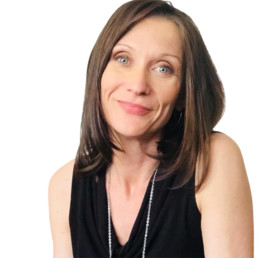
Written by Jennifer Johnson
As a parent, a former educator, an entrepreneur and a passionate change-maker, Jennifer is on a mission to empower young people to be their best selves to create a better world. She has an M.A. in Education in Curriculum, Teaching and Organisational Learning.
Common sense tells us that inclusion initiatives cannot thrive in environments where people are disconnected, have little sense of belonging and are struggling with their well-being. Today, principals are tasked with creating healthy and supportive environments where all stakeholders including teachers, students, staff, families can thrive – all at a time when we are still recovering from the erosion of the social fabric in our schools and communities.
The reality we are all accepting is we are not going back to “normal” anytime soon. Further, the complex issues in our systems cannot be remedied with quick fixes; and, on a school level, principals are not able to tackle such formidable issues using traditional approaches alone. The struggles of the past two years have led to notable increases in everything from mental health issues to bullying and hate crimes – a spectrum of symptoms with seemingly related root causes. These indications are no doubt a result of the unprecedented levels of uncertainty, prolonged interruptions to interpersonal interaction, diminished opportunities for extra-curricular activities, an absence of routine and ritual, and the subsequent loss of a sense of purpose, meaningful connection, and engagement for young people.
However, one of the gifts of the past two years has been the collective interest in taking a closer look at what is at the heart of inclusion and belonging. In order to provide schools with foundational support for critical conversations around inclusion, we need to examine the subtle interplay between well-being and identity, and how they contribute to feeling a sense of inclusion and belonging. Since launching Captains & Poets in schools in 2019 we have seen time and again that they are inextricably intertwined.
Dr. Helen Street, honorary associate professor in the graduate school of education at The University of Western Australia and chair of Positive Schools has introduced the concept of Contextual Wellbeing: “a state of health, a happiness and positive engagement in learning that arises from membership of an equitable, inclusive and cohesive school environment. (2016) In her book Contextual Wellbeing – Creating Positive Schools from the Inside Out, she highlights the relationship between the individual and the environment. “Rather than, ‘How can we improve the wellbeing of young people in our schools?’ perhaps we should be asking, ‘How can we improve equity, creativity and cohesion?’” (2018)
The challenge of creating more inclusive schools is we cannot promote inclusion without first addressing the fundamental human need of connection. This includes connection to self, connection to others, and connection to the world around us. We need to acknowledge that everyone has universal needs of physical, mental, and emotional safety that need to be met before we can connect. We also need to recognize where our systems and behaviours are in direct opposition to the very norms we are trying to reinforce.
Well-being does not happen in a vacuum. It is largely a social experience as well-being and connection have a reciprocal relationship. When we are positively engaged in an environment, we are more likely to have a healthy sense of well-being. Likewise, when we are feeling supported around our well-being, we are more likely to engage in the world and explore who we are in positive ways. One supports and reinforces the other.
When we put a well-being lens on current school priorities around Diversity, Equity and Inclusion (DEI), we can begin to understand the challenges we face in making progress on our objectives. The changes we are trying to make in schools to support a more inclusive environment are directly impacted by the collective state of well-being and vice versa. Both students and educators are struggling with mental health issues in unprecedented ways and most principals will tell you that resilience and well-being are at an all-time low. We need to provide a safe space to explore these needs first. Our individual needs being met are then, in turn, closely mirrored in our collective sense of well-being. Street goes further to stress the importance of context when looking at well-being. Sometimes well-being is about expressing negative emotions and identifying what is not working for us. More than ever, we need to create conditions for this to happen in schools.
A similar interplay is seen in the development of a healthy sense of identity. Identity is a result of the complex and ongoing dynamic between what is inside of us yearning to be expressed, what opportunities and/or barriers are present in our environment, how we present ourselves in the world, and how the world responds to us. At any given point in our lives, we are both solo agents and co-creators in every social interaction. We can see this demonstrated in how we each express who we are in different contexts (work, home, the community, etc.) based on the roles we play, our own needs, motivations and aspirations, the expectations of us, the environment and the underlying needs and dynamics of the group.
It becomes increasingly clear that the development of identity and well-being are not entirely separate constructs. Case in point, the rise of trauma-informed approaches illuminates the interplay between lived experience, our sense of identity in the world, our general well-being, and our ability to express ourselves fully and healthily in different social contexts. It follows that inclusion initiatives should not be mutually exclusive from those of well-being. Otherwise, we are presenting schools with the insurmountable challenge of tackling complex issues through a compartmentalized lens. What is needed more than ever is an integrated approach; and the fact is we are all wired for it.
According to Dr. Dan Siegel, a clinical professor of psychiatry at the UCLA School of Medicine and the Executive Director of the Mindsight Institute, the mind is both embodied and relational. It includes what happens in the whole-body experience as well as how we interact with people and more broadly our world. Siegel’s research in interpersonal biology demonstrates that well-being comes from a state of ‘integration’ whereby we create harmony of our parts within us and extend this relationally by respecting this process in others. With this mindful lens, we can inquire into and honour what is going on inside of us while extending the same to others. By achieving harmony within first we are better able to have empathy for others. We can be attuned to differences in perspective and experience and at the same time ‘link’ to them with compassion. The mind enables us, at once, to hold space for ourselves and others. Well-being can then be described as an integrated self or way of being in the world. This integration of embodied and relational aspects of our experiences then leads to the ability to form deeper relationships that create space for vulnerability, and inspire connection, caring and the desire to help others. Is this not the formula for inclusion?
Looking through this integrated lens, we can begin to understand why taking a purely educational approach to critical DEI conversations is limited. We engage advocacy groups to deliver workshops and keynotes to illuminate the lived experiences of others and inspire us to open our minds to create greater understanding. We resonate with their stories, and we leave inspired only for our institutions to go back to business as usual on Monday. What we aren’t tapping into is the sense of connection that is surfaced in those moments. Without the ability to sustain this connection, our efforts wane and our impact erodes. Until the next year when the cycle repeats.
DEI initiatives aren’t just a top-down initiative and certainly should not be a box-ticking exercise, especially with the limited resources and energy on hand right now. Perhaps what we have been missing all along is that the desire for connection is a free and abundant resource at our disposal. We need to make a shift from informational approaches to inclusion to transformational ones that anchor in our hearts and weave into how we engage each day. Building and then sustaining this bridge between self and others is where we fail. The reality is inclusiveness begins on an individual level. As a result, it is essential we find ways to address and engage those in the room, their own perceived sense of identity and their readiness to connect.
True connection begins from a place of moment-to-moment awareness where we hone and develop who we are in the world, while simultaneously transforming the relationships around us. We can all reap the benefits of living more authentically and cultivating greater connection by leveraging a deeper, broader sense of self in everything we do. At the heart of inclusion initiatives is fostering connection to self while honouring a sense of connection across our differences. The first step we need to take is toward ourselves.
The emergence of self-awareness in human development is both a curse and a gift. It yields the curse of self-consciousness, which inhibits us from being who we are in the moment. But it also gives the gift of self-leadership, which empowers us to make choices about who we want to be in the moment and how we want to show up in the world. Self-awareness enables us to live more fully into our potential – and to support others in doing the same. We all remember those first moments in our young life when we suddenly became self-conscious. We received a subtle or not so subtle cue from our environment that there were aspects of ourselves that weren’t valued or didn’t belong. In that moment, we became fragmented. Our well-being AND our identity were directly impacted. Take a minute to reflect on those defining moments for yourself and who you would be if you had instead received the message that all parts of you matter and are worthy of being seen. How did those defining moments impact who you became in that situation and your happiness over the long-term?
We spend our lives on a journey back to wholeness to reclaim ourselves. We yearn for environments that allow us to find comfort in our own skin and encourage us to be our best, fullest selves. In education, we talk about this in terms of enabling students to reach their full potential, but this is often diminished to academic and strengths-based approaches. What gets missed is the whole child – who we are in all our complexity – as well as how our surrounding social contexts impact us on an individual level. Street reminds us in her book that:
’Flourishing’ is an interplay between our best individual selves and our best environment. This means happiness and success are far more than individual pursuits, or even individual responsibilities. Rather, lasting happiness develops when we form healthy connections in a social context that supports and nurtures us to become the best we can be.
When young people are given opportunities to explore and express who they are and to pursue what is important to them in a safe environment, it results in a healthy sense of identity AND well-being. As educators, we need to be mindful of our responses to students and what messages we are sending about who they are, how much they matter, and what is valued or not valued in them. There are many ways in which we tell students not to bring their full selves. We ask them to get along and when they don’t fit in or retreat from the group we move on with the business of the day. We ask them to conform to rules that have been established presumably to bring cohesion and harmony and when they step outside these lines, we exclude them. Our systems and behaviours are often contradictory to the very inclusive norms we are trying to reinforce. Being in an environment we perceive as safe and supportive of our basic human needs gives us permission to develop an authentic sense of identity. This is key to feeling a sense of connection and belonging.
Inclusion is not an end game and, as a result, the risk of fatigue from existing approaches is high. Instead, it is an ongoing process of intra and inter-personal discovery and dialogue that continues to take us deeper into ourselves, supporting and enabling social change through connection and seeing the we alongside the me. If the human experience is fundamentally about coming back to self again and again, then the journey to self is lifelong. At the core of this journey is self-awareness and the ability to ongoingly connect with the world in new and meaningful ways that have a positive impact on everyone.
So how do we make an integrated approach more accessible in the day-to-day interactions of schools? Educators need foundational strategies to support their own self-awareness in order to support young people in connecting with their own inner experience of identity and well-being. If self-awareness is the path to inclusion, we need to be more present to our role in critical conversations at hand, how the curriculum is delivered, the way we address incidents in the schoolyard, and how we engage with all school stakeholders. And we need to empower the same embodied and relational process with students. Perhaps the greatest opportunity at hand is to find ways to create transformation in our schools starting with kids themselves.
Captains & Poets was created to give students a sense of agency in this process of positively contributing to the social context around them. The premise of the program is that there is a unique Captain and Poet in each of us who, in partnership, enable us to be our best, most authentic selves – and to embrace others in the same spirit. While a simple concept, these archetypes give us deep and ready access to key aspects of who we are and the state we are in. Introducing the Captain and the Poet also provides a neutral language that moves beyond gender and race to the human experience of struggling and striving, creating and thriving to be who we are meant to be.
When we expand our ability to view ourselves, we are better able to see the full human expression in others. This gets us closer to an ‘integrated way of being’ in the world. The message we need to send to educators and students alike is they are whole, resourceful beings who have everything they need inside of them to thrive and that they help create inclusive environments by tuning into their own responses and needs with compassion and curiosity. When we are better able to understand ourselves, we are better able to relate deeply with others.
The phrase we use to help young people embrace and celebrate their uniqueness is, “We are all the same because we are all different.” We all have needs. We all want to be seen, to connect, and to matter. We all have a Captain and Poet inside of us ready to help us be fully expressed in the world. Today, we need Captains and Poets everywhere. Perhaps now is a critical time in education to call upon our collective Poets to hold space for ourselves and others on this journey, and to inspire our collective Captains to create safe spaces that empower us all.
Faith is too often seen as a barrier to LGBT+ inclusion, so we’re launching new resources to change this
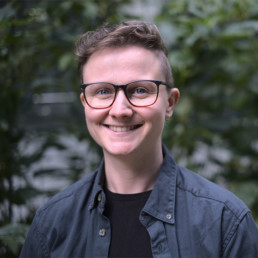
Written by Amy Ashenden
Director of Comms and Media/Interim CEO, Just Like Us, the LGBT+ young people’s charity.
As the new Interim Chief Executive of Just Like Us, my aim this year is to ensure more schools than ever have the tools they need to support their LGBT+ young people.
For several years now, School Diversity Week has been celebrated by so many incredible educators across the UK, showing young people that being LGBT+ is nothing to be ashamed of. Last summer, more than 5,000 primary and secondary schools took part. This year, 26-30 June, I believe it’s vital that schools with intersecting communities have the resources they need to celebrate School Diversity Week.
From faith schools to Welsh-speaking communities and primary schools, Just Like Us will be providing new sets of resources that cater specifically to the educators that need tailored LGBT+ inclusion tools the most. When half of young people (48%) tell us that their school hasn’t given them positive messaging about being LGBT+, it’s clear to me that we have a long way to go and that to change this, schools need the right kind of resources that speak to their individual ethos and community.
Our new independent research has found a third of teachers (30%) say faith has been a barrier to discussing LGBT+ topics in school. More than 7,000 UK teachers took part in our survey this February, revealing an indisputable need for resources that are both LGBT+ and faith inclusive.
That’s why we’ve launched a new series of faith and LGBT+ inclusive resources for Anglican, CofE, Catholic, Jewish and Muslim school communities. From primary assemblies to worksheets and videos featuring LGBT+ young people talking about their faiths, the resources are designed to give educators the tailored tools they need to celebrate School Diversity Week in a way that makes sense for their community. We have also worked in collaboration with LGBT+ faith-led organisations Keshet, Hidayah, One Body One Faith and Quest to develop these resources in a way that really speaks to the communities they’re designed to support.
In faith schools, the research found that 46% of teachers had previously found faith to be a barrier to talking about LGBT+ topics in the classroom, compared to 25% at non-faith schools. I believe it’s vital that we now provide the tools educators at faith schools need to support their young people who may be LGBT+ or have LGBT+ families.
Interestingly, just 3% of headteachers said that faith has always been a barrier to discussing LGBT+ topics.
A lack of LGBT+ inclusion in schools is so rarely about a lack of willingness but instead due to a historic lack of suitable resources that empower educators to get started on their journey. It’s also important that we remember that LGBT+ and faith communities are never totally separate – as you’ll see in the resources, faith is very important to many LGBT+ young people and to suggest that there’s no overlap just isn’t reality. You can absolutely be LGBT+ or an ally and belong to a faith – being Jewish and a lesbian, I know this reality well.
It’s also really important that we don’t erase the fantastic LGBT+ inclusion work that many faith schools are already doing with their pupils. St Stephen’s CofE Primary School in London is just one example of this. Nicola Collins, who works at the primary school, is a huge advocate for celebrating School Diversity Week and won our LGBT+ Inclusive Teacher of the Year award in 2022. She explained: “As a school, we feel passionate about challenging stereotypes and homophobic language. As a result, the children in our school are well informed and accepting of all people no matter who they are!”
We hope that these new resources will be a gamechanger for schools with faith communities to celebrate School Diversity Week this 26-30 June. We really welcome educators to get in touch with your feedback or any questions you might have about making LGBT+ topics faith inclusive.
Acceptance: Still so much work to be done.
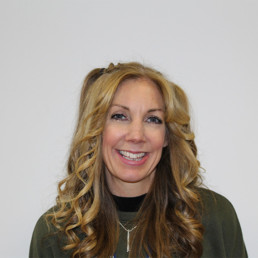
Written by Kelly Richens
Programme Director, BASCITT. BASCITT is proud to celebrate diversity and promote equality and inclusivity (see here)
Applying to train to teach is a daunting enough task; the whole construction of your personal statement and how it defines you, all of your work experience, your qualifications and who will be your referees. All wrapped up in the deep emotions of taking this huge step towards becoming a life-changer for young people.
If this wasn’t searching enough in terms of self-exploration and presenting yourself, there is a section that says ‘Criminal Record and Professional Misconduct’ in which an applicant can make any relevant declaration.
I had an email confirming an application in which there had been such a declaration. Imagine my horror when I opened the webpage to view the application and read: ‘I am unsure whether this is a safeguarding issue, however I feel it necessary to raise and protect myself and others from misunderstanding. I am transgender.’
A flood of emotions ensued: rage that this applicant had felt being transgender could be a safeguarding issue; sadness that whilst she wanted to share this information, she had chosen to include in in a section labelled ‘criminal record’; fear that there are groups of people without the psychological safety to just be who they are without recourse of judgement; and the smallest amount of pride that she had actually been brave to share at all.
So rather than my first conversation with this applicant about her potential qualities as a teacher, I had to have a difficult conversation of reassuring and coaching her that she was in safe hands with us. What a shame that we could not talk instantly about her joy of her subject, or why she was applying to us. Her being transgender was a huge distraction from this and that is wrong.
Whilst I reflect on this, and have since interviewed and offered a training place to this lovely individual, based on her merit, I am still left without an answer of how do we stop this happening again? Keep promoting inclusivity? Keep the courageous conversations going? Keep educating and keep that positive momentum going on how we can continue to aim for a world in which an individual does not fear themselves being viewed through a judgmental lens? Instead a place where everyone can be celebrated for who they are and what they have to offer our pupils.
The Fight Against RSE

Written by Ian Timbrell
Ian is an education consultant and trainer, supporting schools develop their provision for LGBT+ pupils and their RSE curriculum. He has worked in education for 15 years; including as a class teacher and a deputy head teacher.
The cursory glance at social media and the internet suggests that UK RSE curricula include suggestions of bondage, is opposed by most people, is queering education and is a risk to safeguarding. But what is the truth behind this opposition?
The backlash
Broadly, objections can be categorised into three areas: secrecy around RSE; developmentally inappropriate materials; the inability to withdraw from lessons; and the ‘queering’ of education.
The secrecy around RSE
A common oppositional narrative is that schools refuse to show what materials they are using. This view essentially accuses all teachers of not safeguarding their children. We’re not asked to show all materials so why is RSE different? If schools were to publish every piece of planning and resource used, the workload would push an already overworked system to the brink of collapse. This is not to say that there is no transparency. Generally, schools will share this information upon request, or through parent consultations.
RSE is developmentally inappropriate
Opponents of RSE claim it contains messages of anal sex, bondage, pornography and self-stimulation at age 4-6. My son is 9 and I would be horrified if he learnt any of these at his age. But he’s not. Because none of it is in the RSE frameworks.
Proponents of this message often use excerpts of preparatory paperwork as evidence for inappropriate content. But these aren’t in the mandatory documents. As part of any curriculum design process, you look at a wide range of documents to find out everything that is out there. That doesn’t mean that Governments use them, or that you agree with them.
I am not saying that no school has ever used inappropriate materials, but critics fail to acknowledge that these mistakes are in the smallest percentage of schools and instead of banning RSE for all, the individual school should take the appropriate action to ensure appropriate nature of the materials they are using in lessons.
The inability to withdraw from lessons
In Wales, parents are not allowed to withdraw pupils from RSE lessons. Being told that we cannot withdraw our children from any areas of their life is bound to put some people’s heckles up. However, the reality is that this is the case for pretty much every other area of the curriculum. Schools would not allow withdrawal from English or Maths, so why should it be allowed from a framework that aims to develop healthy, happy people?
One of the reasons that withdrawing from all RSE lessons is not as simple as some would like you to think, is that effective RSE is primarily not delivered as ‘RSE lessons’. RSE encourages friendships and respect and so it is impossible to withdraw from any lesson that develops these attributes. What the parents here are generally saying is that they want them withdrawn from sex education and/or mentions of sexuality or gender. Withdrawing from RSE frameworks as a whole is impossible, but withdrawing from sections would be a logistical nightmare for schools and is not realistic.
The ‘Queering’ of Education
This phrase is fascinating, especially because it has no agreed universal meaning. Most opponents seem to be using it as a phrase to suggest that ‘Queer Theory’ is now underpinning education. They are conflating the true meaning of Queer Theory with conspiracy theories to suggest that there is collusion in education and health to somehow convert children to become LGBT+. This is rooted in LGBTphobia and is not founded on anything but discrimination and panic culture.
The real reasons for the backlash
The most obvious and largest group appear to be transphobic and homophobic. The reality is that up to 10% of the population are LGBTQ+ and if we do not ever discuss these things, this whole section of society will grow up wondering why they feel different. But also by deliberately not mentioning LGBTQ+ people, we are saying that they don’t exist, which is phobic in and of itself. Inclusion of LGBTQ+ people on displays, in books and in lessons is not going to turn anyone LGBTQ+, but it will make our world a more inclusive and tolerant place.
An argument opponents to RSE also use is that they don’t want sex talked about to three-year-olds. But sex doesn’t need to be mentioned. At that age, it’s about realising that there are different families and challenging gender stereotypes.
The final reason that I will talk about here is religion. A minority use religion as a reason for their children not to be ‘exposed’ to LGBT+ or gender discussions. I follow a number of LGBTQ religious individuals and organisations, and I can tell you that religion does not spread hate, people do.
Conclusion
In 2021, 5 parents took the Welsh Government to court to ban RSE. Unsurprisingly, they lost the court case as many of the disproved views from above were put forward as ‘evidence’.
The fact is, no matter what change happens in schools, there are always opponents and critics. But when you couple inevitable bemoaners with homophobia and transphobia, there was bound to be pushback. But RSE is key to making the UK an inclusive country and the vast majority of us know that it is the right thing to do and trust the teachers to do the best by their children.
Embracing Equity

Written by Ben Hobbis
Teacher, Middle Leader and DSL. Founder of EdConnect and StepUpEd Networks.
Equity (noun) – the quality of being fair and impartial.
This year’s theme for International Women’s Day is embracing equity. I have to admit over five years ago, if you asked me what this word meant, I could not have told you. I was uneducated and naïve in this area. I had to educate myself.
Five years ago, I would have said I was a champion for equality. I had done this in my previous roles in retail, particularly when it came to recruiting. In my last store, I had a very diverse team across the nine protected characteristics across the Equality Act. And this recruitment was not tokenistic, we had a fantastic team who were brilliant at what they did, and their diversity all brought something to the table. What I did not realise at that time was that I actually was a champion for equity, without knowing it. I was also an ally, but I did not recognise this either.
I believe I am a real champion for equity. This comes down to my allyship. As a white, able bodied, straight male, I have a duty to champion, advocate and push for equity. I see this in my day job as a teacher. As the champion for those 30 children who I serve, I must be the one to challenge decision making that directly impacts my children, decisions that affect them both negatively and positively. As a leader in a school, I must champion equity of opportunity. For example, as Personal Development Leader, one of the first things I enacted was to remove the Head Boy and Head Girl positions, they were limiting because of sex. We now have a mixture of students involved with our student leadership and pupil voice systems. And I am pleased to say in a boy heavy school, we have a large group of girls leading from the front and I am so proud to watch and champion them. As the leader of a grassroots network, I am constantly challenging colleagues in terms of the diversity of event line ups and who our intended audience is.
I recognise, I have not had it as hard as my female counterparts (but also my counterparts who are BAME, LGBTQ+ and so on). Therefore, I must embrace equity in my life and my work. We should all be striving to create an equitable society and not allow equity to be ignored. Embrace equity!
How about making sure your World Book Day Celebrations have inclusive and representative impact too?
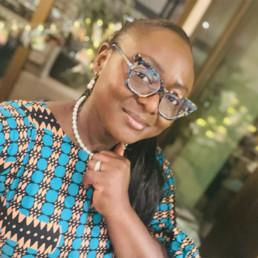
Written by Ndah Mbawa
Ndah runs Happier Every Chapter, a literacy service committed to helping schools and families improve diversity awareness and reading attainment through library diversity audits and the provision of diverse, inclusive and representative bestsellers for children. Her passion for decolonising mindsets within the school-to-workplace pipeline and supercharging the will/skill to read is shared by her teenage daughters, Kirsten & Aiyven.
It’s a little known fact that children start to form biases like racial bias much earlier than we think. For instance, from as early as 3 – 6 months, a baby’s brain can notice racial differences in the people around them. By the time they are 2, most children have soaked up stereotypes about race and may express these with one way or another. By 4, children can directly express race based prejudice or bias by teasing. And, by age 12, many children become set in biased thoughts, actions and decisions. Makes you think about what’s in the school-to-workplace pipeline doesn’t it? One doesn’t need to look further than the Ashford School incident for hard and gravely worrying evidence of such biased actions.
World Book Day provides a great opportunity to be more intentionally inclusive and it doesn’t always have to come down to dressing up. It’s never too early to begin the work of anti-racism & diversity awareness or to help your school setting make progress in conscious equality even as you promote the love of reading. With 34.5% of primary age pupils in the U.K being from minority ethnic backgrounds, diversity will not be the issue for a lot of school settings. How included these pupils feel and consequently how much of a sense of belonging they have will often be the issue. Somewhere in those corridors, a significant amount of pupil engagement is lost. How will you use events like World Book Day to further drive home the message that all are welcome and all belong?
Here are some tips to celebrate World Book Day in a more inclusive way:
📖 Start a book, an anthology and encourage children from different ethnicities or cultures to contribute short stories from their heritage. It will be a great way to uphold this year’s theme of making it ‘your’ World Book Day.
📖 Read stories with a diverse range of characters making sure that these are not limited to ethnic and cultural representations but also include other forms of diversity like gender, ability, neurodiversity, family set-up, sexual orientation etc. When stories featuring diverse characters are told with authenticity, it helps children develop empathy and inclusion giving them an opportunity to see themselves and the world around them in the books they read.
📖 Where possible, ensure the diverse titles selected / included in your World Book Day list are written by own voice authors. As much own voices are not always entirely representative of everyone within that group, it will for the most part foster better connection with the stories as children will not only see themselves in the books but will also be able to relate to the person behind the words thus giving confidence that the worlds created or described are represented in the most genuine light possible. The most powerful advantage of reading own voice books, has got to be that the stories are often told in a way that shines the light on the nuances and subtle differences within that group which can help dispel the stereotypes, generalisations and harmful single stories we may have become so attached to.
📖 For author visits around World Book Day and beyond, engage authors who represent diverse groups or voices. The phrase “We can’t be what we can’t see” will not be new to most of us. Having a face-to-face or virtual encounter with someone we can relate to in one way or the other, is a powerful way to make the right impact.
📖 Promote the use of World Book Day £1 tokens to buy books with diverse characters or books on anti-racism, diversity and inclusion. Being an Ally: Real Talk About Showing Up, Screwing Up, and Trying Again by Shakirah Bourne & Dana Alison Levy is a fabulous choice.
📖 Educate children on how World Book Day is celebrated around the world.
📖 Encourage children to proudly own their heritage by asking them to dress up as their favourite character from one of their cultural folk tales.
Let’s make it a “WORLD” Book Day as the name suggests.
The Time is Now
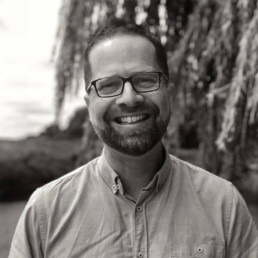
Written by Matthew Savage
Former international school Principal, proud father of two transgender adult children, Associate Consultant with LSC Education, and founder of #themonalisaeffect.
I write this as a father, and as an educator. I am angry, and I am scared.
Occasionally, partly as an experiment, I will share simultaneously on Facebook a) an innocuous post with a smiling photo of me; and b) a ‘call to action’ in support of my two trans children in an alarmingly transphobic world. The former consistently attracts lots of engagement, and the latter virtually none. My inference, corroborated by conversations I have had, is that a majority of people do not want even to enter what they see as a polarised and toxic debate.
This seems to me to be a victory for transphobia, and the ‘gender-critical’ right wing: that it is now widely accepted that we need to debate this at all, when any debate over the human rights of any other protected characteristic would be widely deemed abhorrent. Therefore, whilst some would argue that now is the time for calm debate, and for pause and reflection, this post is none of these. For I would argue that there is also a time for advocacy and allyship, and for activism and action. And the time is now.
I was young enough to experience the acidic effect of Section 28 as a teenager. Growing up in the 1980s, I was oblivious of the identities and expressions of the LGBTQ+ community: in part, this was due to a cowardly and shameful lack of representation in the media, sport and public life, and, in part, to the ignorance and fear of the blinkered society which tried to bring me up; but it was also due to the inability and incapacity of educators even to talk about those lives, even as so many of those same lives were being decimated by a new, deadly virus.
This violent clause was repealed in Scotland in 2000 (it seems the nation I now call home was ever ahead of its southern neighbours), as one of the earliest pieces of legislation enacted by the nascent Scottish parliament and, eventually, by Westminster in 2003. Peace had defeated violence, and love had vanquished hate. However, violence and hate, it seems, had not been beaten, but had merely lurked, waiting for their renaissance; and a new Section 28 lies on the horizon.
At the time of writing this, just over 205,000 people have signed a parliamentary petition calling for the government to “Remove LGBT content from the Relationships Education curriculum”, and this is now awaiting a date for parliamentary debate. Meanwhile, just over only 92,000 people have signed a counter-petition calling for that same government not to do so, and the government is only obliged to ‘respond’.
That is 120% more hatred than love, and 120% more violence than peace.
There is no debate, when it comes to deciding who has human rights and who does not. There is no calm when some of the most oppressed, attacked and marginalised children, young people and adults in our society are under attack. There is no reflection, when the facts and the statistics instantly destroy the hatred, on the too few occasions they are shared. And there is no pause, when children’s and young people’s very lives are in danger.
I write this as a father, and as an educator. I am angry, and I am scared.
Please give your voice to peace and love, both through this petition, and through literally any other means possible.
The time is now.
What if we replace toxic masculinity with intersectional masculinity?

Written by Zahara Chowdhury
Zahara is founder and editor of the blog and podcast, School Should Be, a platform that explores a range of topics helping students, teachers and parents on how to ‘adult well’, together. She is a DEI lead across 2 secondary schools and advises schools on how to create positive and progressive cultures for staff and students. Zahara is a previous Head of English, Associate Senior Leader and Education and Wellbeing Consultant.
In 2021, I led a conference at Beaconsfield High School on how schools can overcome toxic masculinity by revisiting their gender behaviour policies. 16 schools, students and parents heard from Hira Ali, Harry Moore, Leila May Lawrence, Aaron Pandher and the Global Equality Collective, The Terrence Higgins Trust and Headteacher, Peter Tang, on how we can create equitable behaviour policies and create a culture of respect in secondary schools. Over a year on, the discussion continues as schools are now tasked with tackling the rise of online hate and misogyny fuelled by Andrew Tate.
In schools, amidst the pressures of a recruitment crisis, a cost of living crisis and exam period, education about misogyny and sexism is being called on. As someone who is heavily involved in leading, researching and writing about this area, I worry, as an educator, as a parent and as a human, we’re talking more than we’re listening. An uncomfortable opinion perhaps: in the age of social media, content consumption, likes, comments and information overload we are overwhelmed with the problems, the dangers and fear. Whilst these feelings may be justified, we are looking for quick solutions before we understand the problems of toxic masculinity.
For those of us who parent and teach, we know young people can be insecure sponges, looking for a sense of belonging, validation and acceptance. Amidst the doom and gloom of school, online comparison and tackling their mental health, they’re also looking for fun. We know how impressionable young people are. We know for the most part, they just want to fit in – and therefore they look and listen for where this might be. So many have found a sense of belonging, entertainment and acceptance online with accounts and material that perpetuates – in this case – historic and systemic misogyny. The conference I led and articles I’ve written are tools to support schools to resolve this. What I realise now, though, is I was yet again facilitiating a great deal of information (albeit, valid and necessary) without listening to those it affected: the boys.
Professor Scott Galloway explains that our understanding of masculinity has been misconstrued and in many ways, caught up, in toxic masculinity – or what we perceive to be toxic masculinity. The data, research and case studies show that young men need support, whereas social media and the news imply masculinity is the problem – this all becomes a vicious cycle of information where many of us end up none the wiser.
Of course, as a woman and a woman of colour, I am well aware of the whataboutisms, counterarguments and rebuttals that may be flung my way. For the sake, success and safety of all our students, we now need to pause and create space for intersectional male experiences of our young people.
I say this because, as simple as it may sound, every young boy we come across has a different lived experience and whilst we hurry to find out how to make sure our children are safe, educated and staying away from the vile content they come across online, are we actually listening to them?
- Are we listening to the boy who has sisters he loves and respects, and knows exactly how to ally with women – because he is surrounded by strong people?
- Are we listening to Black and Asian boys who are still living amidst the trauma of George Floyd’s murder, and recently, the tragic murder of Keenan Anderson?
- Are we listening to Muslim boys who feel their faith and identity are constantly under a negative spotlight, or a spotlight entrenched in patriarchy and misogyny?
- Are we listening to boys who don’t like sport, but don’t know where else to go on the school playground?
- Are we listening to boys who are gay and don’t know where to turn, who to talk to, out of fear of what may happen?
- Are we listening to boys who are constantly told to be strong, but don’t know how?
- Are listening to boys who are vulnerable, without dismissing their feelings?
- Are we listening to boys who are struggling with their mental health but don’t know where to turn?
- Are we listening to boys who are told they will take on responsibility for the family once they’re old enough?
- Are we listening to girls who have wonderful relationships with their fathers and brothers and are collectively working together for equality and equity?
- Are we listening to boys and girls who share healthy relationships?
I could go on, and on and on. And, I know the same questions apply to women – intersectional feminism is perhaps a more well known term than intersectional masculinity. Equally, there is an absolute understanding and appreciation that intersectional masculinity is systemically privileged and of course, within that hierarchy of privilege, some men are more privileged than others. Having taught boys for a good few years and now, parenting a boy, I think part of the solution here is not just to teach them, but to listen. To understand who they are and who they want to be; to listen and then question their understanding of social norms, gender stereotypes and more. To understand their relationships, their communication, their hobbies.
There is research to suggest teenagers fare better in group therapy; the best conversations I’ve had with boys is in small groups, in the classroom. It’s the best place to listen to their lived experiences, challenge and discuss their views and form trusting and safe relationships – for them and young female students, too. Plus, the banter can be pretty entertaining.
Listening is a part of a wider solution and I know we are all still trying to figure out what that is. For now, though, let’s change their algorithm and introduce them to positive online male role models such as:
- Steven Bartlett
- Vex King
- Jay Shetty
- Marcus Rashford
- Ali Abdaal
- Dr Alex George
…and I’m sure the list can be much longer. There is absolutely a need to rid systemic and social structures of misogyny. Part of that battle – perhaps, part of the solution – is to listen to the experiences of young men too.

